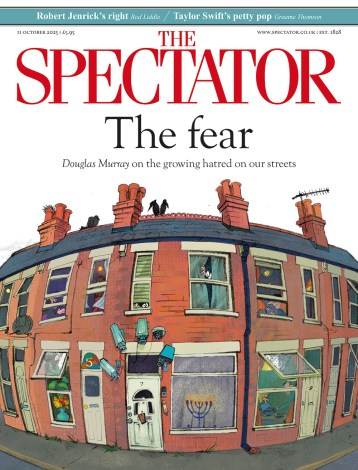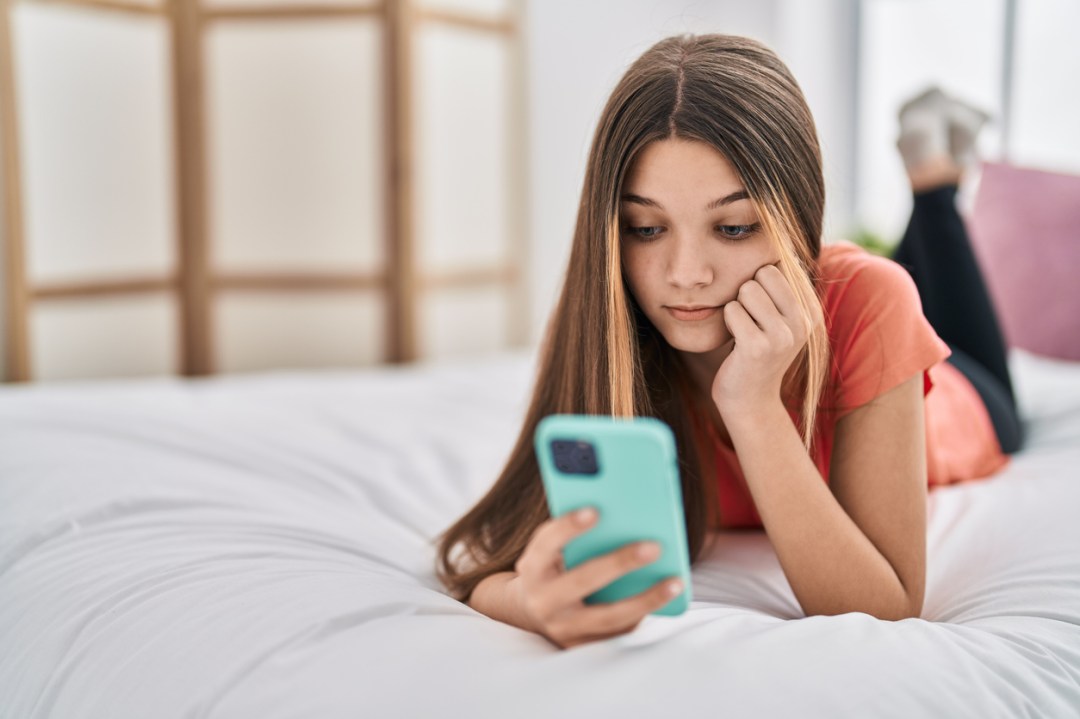Would you knowingly give your daughter a birthday present that was going to increase her chances of self-harming, developing anxiety and even depression? I assume the answer would be no, yet this is what so many parents do to their children when they give them a smartphone with access to social media.
You could not design anything more pernicious for socially insecure teenagers
As a mother of two daughters who are now teenagers, I know the pressure to do so feels enormous. Children see us adults glued to our phones, their peers have them, and their friends socialise on them. The temptation to give in can be, like the temptation to check WhatsApp, overwhelming.
Helpfully, some new research has come out which should help parents make the right decision. A report by Sapien Labs, which analysed global data from nearly 30,000 18 to 24-year-olds is unequivocal; the younger the child is when they receive their first smartphone, the worse their mental health as they grow older.
The percentage of females with mental health problems is 74 per cent for those who received their first smartphone at age six. It’s 46 per cent for those who received a phone at age 18. For males, it’s 42 per cent at age six and 36 per cent at age 18. Problems with suicidal thoughts, feelings of aggression towards others, a sense of being detached from reality and hallucinations declined the older the child was when they got a phone.
And for those who think your happy home is a good enough buffer, the same study found the correlation between mental well-being and age of smartphone acquisition was just as strong for those with no traumatic or adverse childhood experience.
Having recently spent time with my goddaughter, who is 15, this correlation comes as no surprise. She was suffering significant feelings of anxiety and depression. The main culprits? Tik Tok and Instagram. A quick look over her shoulder at the two-minute videos she was watching showed me the problem in no time.
She was absorbed by videos showing freakishly skinny girls – long hair, bangs, heavily made-up eyes – all looking like they were having an enviable blast. Often, they were dancing provocatively, putting on make-up, dressing up in new clothes, discussing their most recent diet tips, and having fun on holiday or at a party.
So here in lies the problem with TikTok, Instagram and teenage girls. At a time where self-confidence is painfully low, their point of reference is not a natural one – your class, perhaps the girls from a nearby school or your town. Instead, teenage girls are comparing themselves to something that doesn’t exist. The women in these videos are not actually having fun – they are too busy taking videos of themselves to enjoy the moment and their looks are distorted with corrective filters. The whole thing is a lie. To a young teenager, however, the comparison to your own less-than-superhuman self is stark and painful. The more they scroll, the further their confidence falls.
The videos were vacuous, narcissistic and nihilistic. There were no recordings about what books the girls enjoyed, what they were interested in and what issues they cared about – nothing aspirational in a deeper sense, just pure objectification.
Another app my goddaughter pointed me to is Snapchat (which is what teenagers mainly use to communicate, WhatsApp is for oldies). The photo-sharing app enables you to track the live location of those you have connected with (each person is depicted by a fun avatar), so you can watch from your sofa at home as your friends all head off to parties and holidays that you have not been invited to. You could not design anything more pernicious for socially insecure teenagers.
Then there are the filters which you can use on all these apps, which ‘correct’ your face to look more ‘attractive’. The nightmare ingredient here is that they are encouraged to take an analytical approach to their face. They can see how the filter slims down their noses, makes their mouths wider and their lips fuller. It’s the perfect advertisement for plastic surgery.
It’s notable the degree to which social media negatively impacts girls far more than boys. We also know that young girls are more likely to receive sexual messages than boys. Surely this should be the issue for the latest wave of feminists?
Deep down, if we are honest with ourselves, we parents know all this. We wrestle with the risk of fallout and social isolation for our children if we don’t give them a smartphone before the age of 16. We also wrestle with the risk of significant mental health problems brought on by having one.
These apps have been designed by the brightest and best minds from across the world, with vast quantities of funding behind them, to make them as addictive as possible. Up against this, our children don’t stand a chance, which is why we must protect them.
This issue of teenage smoking, which a Tory-led Britain is now slow banning, is dwarfed by the wreckage social media is doing to our young. A truly brave government should, in the words of Rishi Sunak ‘make tough choices and big decisions that will deliver long-term success’ and ban social media for under 16s.
But we can’t rely on government bans alone to protect our children. We parents must do more. We need to create a cultural shift where it is socially unacceptable to see a young teenager – let alone a child – with a smartphone. To make it as shocking as seeing a ten-year-old lighting up a rollie. We did this with drink driving and racism. Now it is time to do it with smartphones. The health and happiness of our children depends on it.







Comments